Feeling frustrated by incomplete data and missed opportunities in your Google Ads campaigns? You’re not alone. Traditional conversion tracking often falls short, leaving you with blind spots and limited insights into your audience’s journey. Say hello to Enhanced Conversions! In this blog post, I will explain what Enhanced Conversions in Google Ads are and how to set them up.
What is Enhanced Conversions in Google Ads?
Simply put, Enhanced Conversions is a feature within Google Ads that allows advertisers to supplement their existing conversion data with additional first-party data from their website. This means that if a user completes a conversion on your website and provides some form of identifiable information (such as an email address or phone number), Google Ads can use this information to match the conversion with a specific user.

This is done in a privacy-safe way, with all data being hashed and anonymized before it’s used. The result is a more accurate understanding of how users are interacting with your ads and converting on your website.
For instance, if a user clicks on your ad on one device but completes the conversion on another, traditional conversion tracking might not attribute the conversion to the ad click. However, Enhanced Conversions can use hashed data, such as an email provided by the user during the conversion process on your site, to match the conversion back to the ad click more accurately.
Benefits of Using Enhanced Conversion Tracking in Google Ads
In the world of digital marketing, data is the cornerstone of every successful campaign. The more accurately you can track your conversions, the better you can optimize your campaigns for maximum return on investment. This is where Enhanced Conversion Tracking in Google Ads comes into play. But what exactly are the benefits this feature brings to your campaigns?
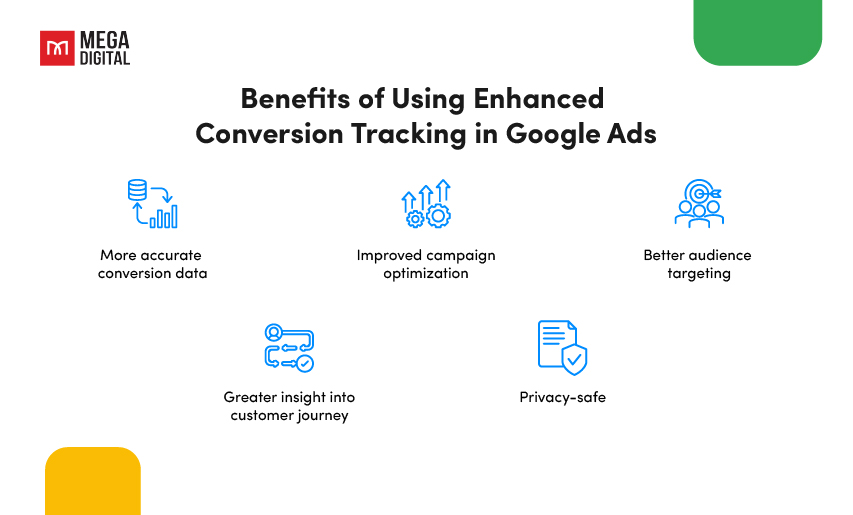
More accurate conversion data
One of the primary benefits of Enhanced Conversions is the improved accuracy of conversion data. Traditional conversion tracking methods may not always capture the full picture due to factors like users switching between devices.
Enhanced Conversions addresses this issue by using first-party data from your website, such as hashed email addresses or phone numbers. This additional data allows Google Ads to more accurately attribute conversions to specific users and ad interactions, providing a more precise understanding of how users are interacting with your ads and converting on your website.
Improved campaign optimization
More accurate conversion data translates into better campaign optimization. With a clearer picture of which ads are driving conversions, you can make more informed decisions about where to allocate your budget and how to adjust your bidding strategy. This can lead to improved campaign performance, higher return on investment, and more efficient use of your advertising budget.
Better audience targeting
Enhanced Conversions can also lead to better audience targeting. By gaining a deeper understanding of who is converting on your website, you can create more targeted ad campaigns that resonate with your audience. This can lead to higher engagement rates, improved click-through rates, and ultimately, more conversions.
More accurate insight into the customer journey
Enhanced Conversions provide a deeper insight into the customer journey. By tracking conversions more accurately, you can see the path users take from seeing your ad to converting on your website. This can help you identify potential bottlenecks or drop-off points in the conversion process and make necessary adjustments to your website or ad strategy.
Privacy-safe
Lastly, Enhanced Conversions are designed with privacy in mind. The feature uses hashed first-party data, ensuring the privacy and security of user data during transmission. This means you can leverage the benefits of Enhanced Conversions while maintaining the trust and confidence of your users.
How does Enhanced Conversions work in Google Ads?
Enhanced Conversions work in tandem with conversion tracking in Google Ads to provide more accurate and detailed conversion data. Here’s how it works:
- Data capture: When a user completes a transaction or fills out a contact form on your website, your conversion tracking tags capture first-party customer data such as an email address, name, home address, or phone number.
- Data hashing: This data is then hashed using a secure one-way algorithm known as SHA256. Hashing transforms the data into a different form, ensuring the privacy and security of the data during transmission.
- Data matching: The hashed data is sent to Google in its hashed form and then used to match your customers to Google accounts, which were signed in to when they interacted with one of your ads.
- Conversion attribution: The resulting hashed data is then matched with logged-in Google accounts. It has resulted in attributing your campaign conversions to ad events such as clicks or views.
- Reporting: You will receive aggregated conversion reporting. This gives you a more accurate view of how people convert after engaging with your ad.

How to Set Up Enhanced Conversions Tracking in Google Ads?
Setting up Enhanced Conversions in Google Ads is a simple process. In this section, I will walk you through 2 main options to set up Enhanced Conversions in Google Ads.
Option 1: Implement enhanced conversions using Google Tag Manager
Enhanced conversions supplement your existing conversion tags by sending hashed first-party conversion data from your website in a privacy-safe way. To set up enhanced conversions this way, you need to have conversion tracking already set up in the Google Tag Manager container you plan to use for enhanced conversions.
Step 1: Access to Conversions Actions
First, log in to your Google Ads account.
Once you’re logged in, look for the tools icon in the upper right corner of your Google Ads dashboard. Clicking on this icon will open a dropdown menu.
In the dropdown menu, you’ll see a section labeled ‘Measurement’. Under this section, click on ‘Conversions’. This will take you to the conversions page where you can see all your existing conversion actions.
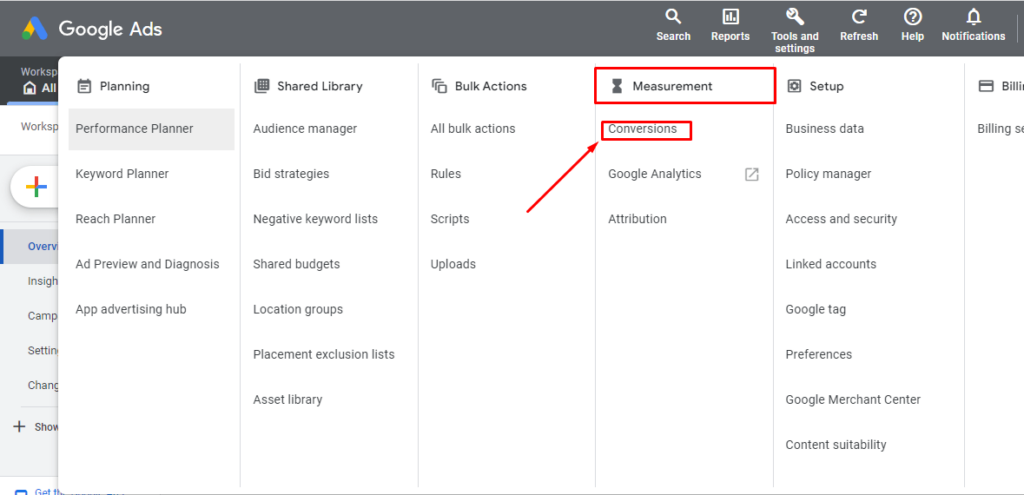
Step 2: Choose the Conversion Action
On the conversions page, you’ll see a list of your existing conversion actions. Choose the conversion action that you want to use with Enhanced Conversions. Click on it to open the settings for that conversion action.
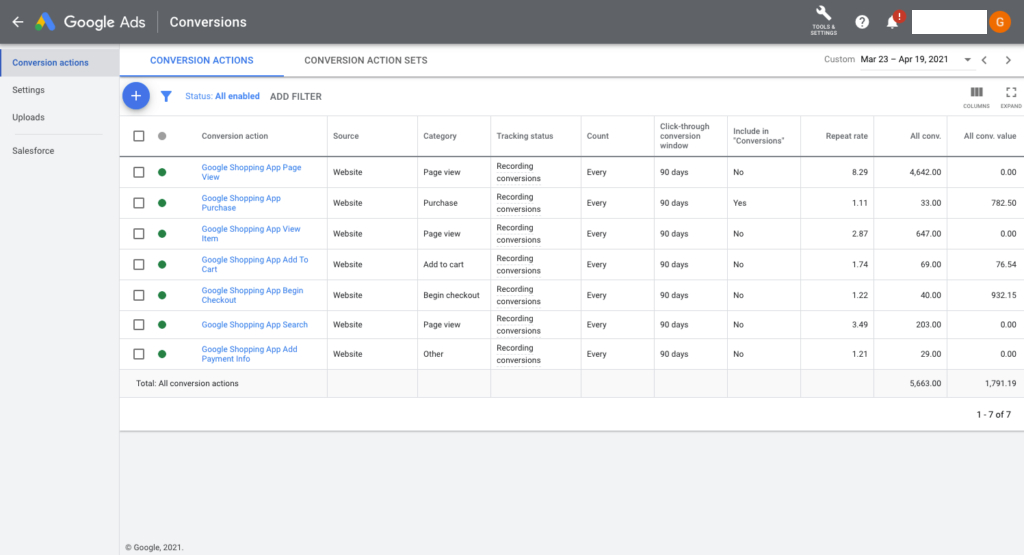
Step 3: Turn on Enhanced Conversions
In the settings for your chosen conversion action, you’ll find an option labeled ‘Enhanced conversions’.
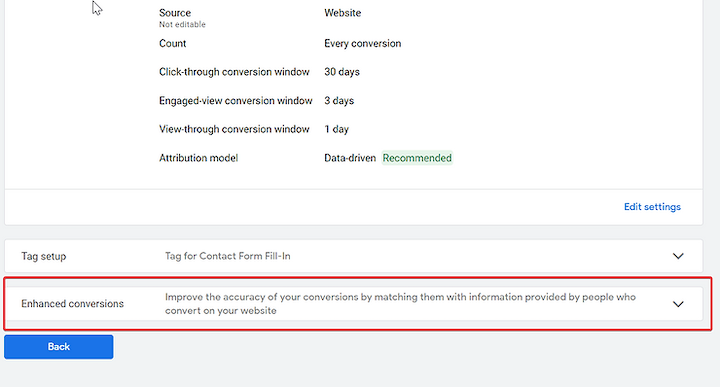
Click on this option and select ‘Turn on enhanced conversions’. This will enable Enhanced Conversions for that particular conversion action.

After enabling Enhanced Conversions, you’ll be asked to enter some additional information. This includes the type of customer data you’ll be using (such as email addresses or phone numbers), and how you collect this data on your website.
Once you’ve filled in all the required information, click ‘Save’. This will save your changes and enable Enhanced Conversions for your chosen conversion action.
Option 2. Use options that require coding knowledge
Use code snippets
Add a code snippet on your website that transmits hashed client data for matching. This approach enhances the precision of enhanced conversions by guaranteeing that you consistently dispatch appropriately formatted data each time your conversion tag is activated.
Use CSS selectors or JavaScript variables
If you regularly update or change your website code, perhaps for formatting purposes, then it’s recommended that enhanced conversions are implemented with CSS or JavaScript instead. With this method, you can manually identify CSS selectors or JavaScript variables on your webpage that hold pertinent user-supplied data. This approach offers more accuracy than automatic detection, but it’s not as dependable as embedding code into your website.
Full instructions for setting up enhanced conversions with code knowledge can be found here.
Common Problems with Google Enhanced Conversions and How to Troubleshoot Them
While Google Enhanced Conversions is a powerful tool for improving the accuracy of your conversion tracking, like any technology, it can sometimes encounter issues. Here are some common problems that can arise with Google Enhanced Conversions and how to troubleshoot them:
1. Missing user-provided data
This issue can occur if the user-provided data (such as email addresses or phone numbers) is not being captured correctly. To troubleshoot this, check your website’s form fields to ensure they are capturing the necessary data and that this data is being correctly passed to Google Ads.
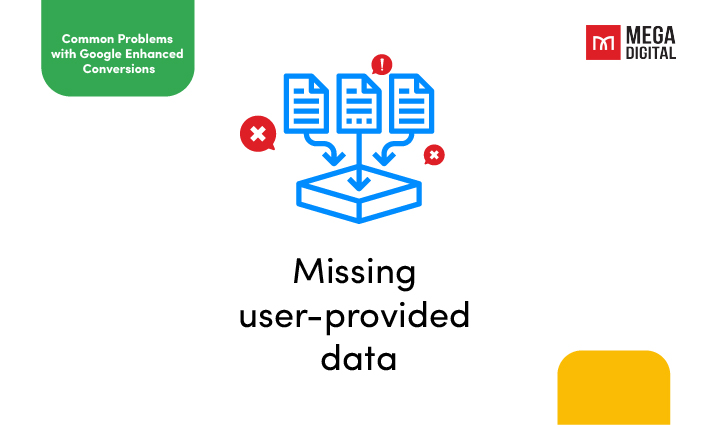
2. Incorrect data formatting
If the data formatting is incorrect, it can cause issues with Enhanced Conversions. This can be resolved by checking the format of the data being sent to Google Ads and ensuring it matches the required format.
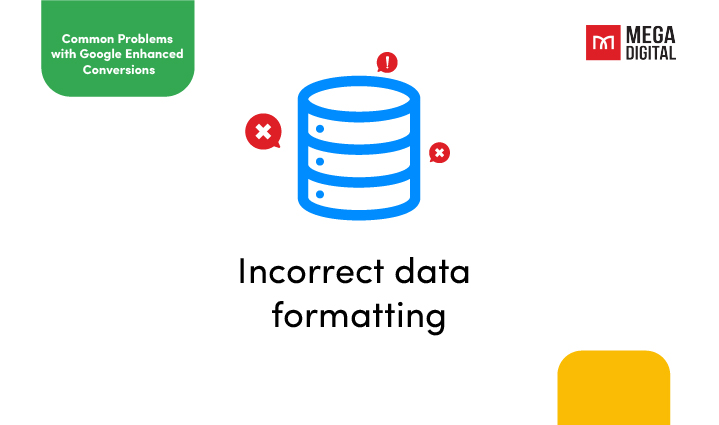
3. Missing required address fields
If required address fields are missing, it can affect the functionality of Enhanced Conversions. To fix this, ensure all required address fields are included in your website’s form fields and that this data is being correctly passed to Google Ads.
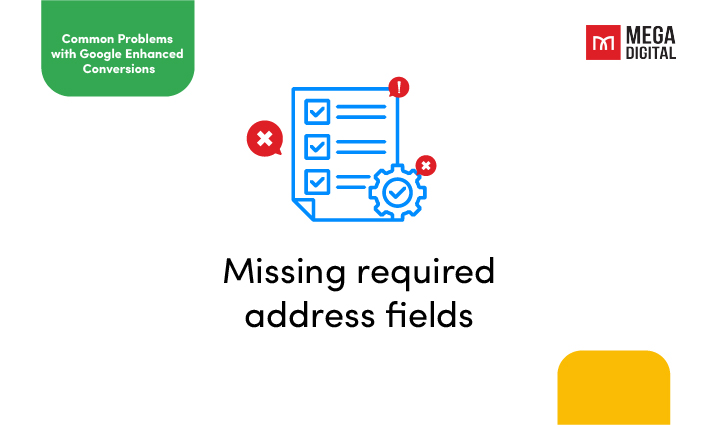
Conclusion
Enhanced Conversions in Google Ads is a powerful feature that can help advertisers gain a more accurate understanding of their ad performance. By setting up Enhanced Conversions and leveraging its benefits, advertisers can make more informed decisions and improve the effectiveness of their campaigns.










